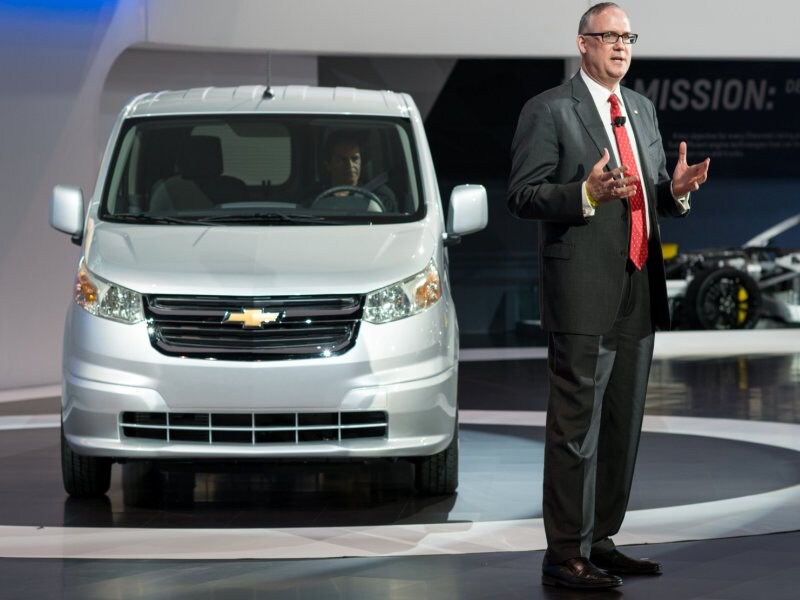Recent Articles
Popular Makes
Body Types
2015 Chevrolet City Express Road Test Review
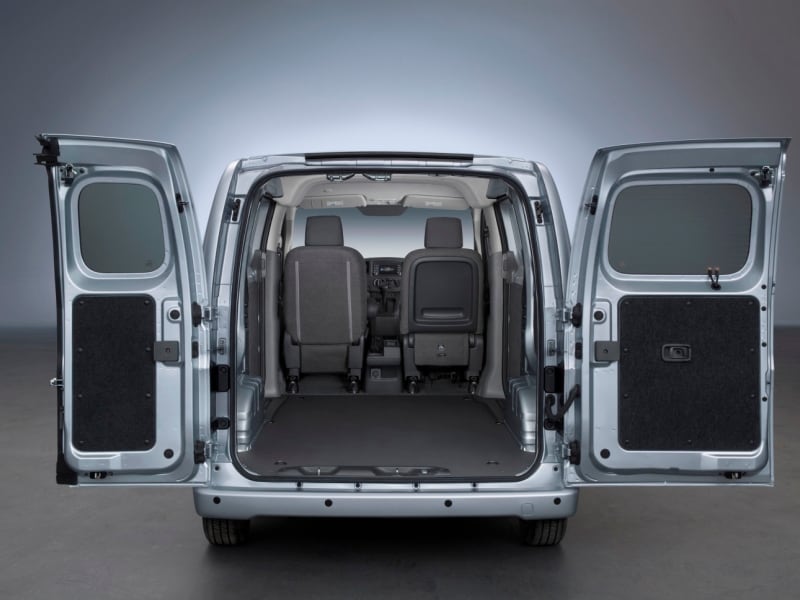
No way Chevrolet and Chrysler were going to let Ford have the compact van market all to itself with the Transit Connect. In the case of Chevrolet, the response to Ford’s successful little van-let is the 2015 Chevrolet City Express. Like its Dearborn competitor, the City Express is nicely sized for urban-based service businesses or any other light-duty oriented activities really.
With its customizable interior, the Chevrolet is perfect for hauling medium-sized loads and a worker, while remaining nice and agile for dealing with the vagaries encountered while negotiating crowded city streets. The City Express also returns good fuel economy when operated in stop and go traffic.
By the way, if you’re looking at the Chevrolet compact van with something of a “Hey, haven’t I seen you before?” expression, you have. GM rebadged the Nissan NV200 to get the subject of this 2015 Chevrolet City Express Road Test Review into the game.
Models and Pricing
For the 2015 model year, the 2015 Chevrolet City Express is being offered in two levels of trim. The base LS package starts at $22,950, while the City Express LT’s pricing starts at $24,510.
Standard equipment on the City Express LS includes 15-inch steel wheels, power front windows, a height adjustable driver’s seat, a fold flat passenger seat, air conditioning, a stereo audio system with a CD player and an auxiliary audio input port, 40/60 split rear cargo doors, a pair of sliding side doors, seats upholstered in cloth and vinyl, and a tilt steering wheel. Cruise control is offered as an option.
Moving up to the City Express LT will add power door locks, heated power adjustable exterior rearview mirrors, a rear parking sensor array, keyless entry, and a 12V power outlet in the cargo compartment.
Glass and Appearance packages are available to enhance both the LS and LT. The Glass package fits privacy glass, a passenger side rearview mirror, and a rear defroster. The Appearance package adds wheel covers, and a chrome grille, along with body colored bumpers, mirror housings, and door handles. The LT’s Technology package makes navigation, satellite radio, Bluetooth, and a rearview camera available.
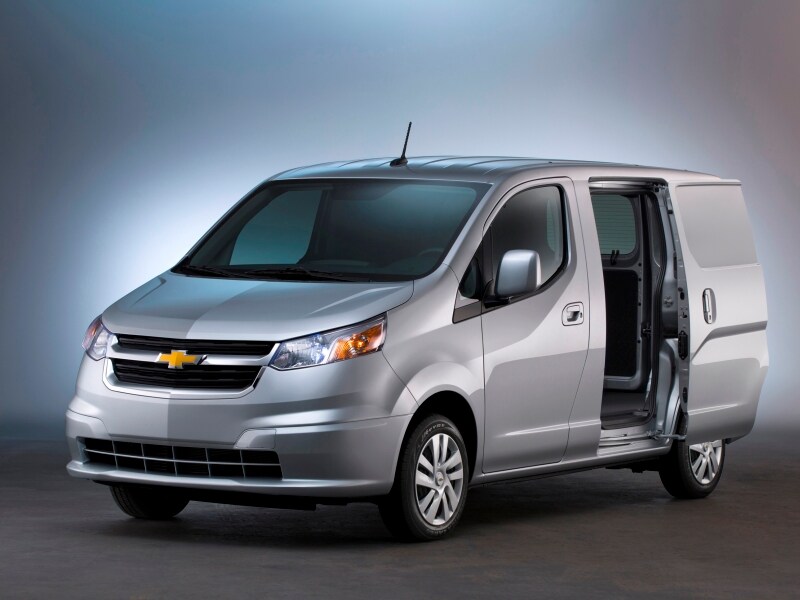
Design
Riding upon a wheelbase of 115 inches, with an overall length of 186.3 inches, parking the City Express takes up about the same amount of space as an Audi A4. Unlike the Audi, however, the design of the City Express is all about maximizing cargo capacity.
With its compact front-drive powertrain consuming very little of the overall volume of the City Express, its cavernous interior can be given over to the passenger and cargo compartments. Of course, City Express is a work van; so minimal interior space is given over to the driver and passenger—leaving the vast majority of the Chevrolet available to haul gear.
The dual rear sliding doors facilitate loading as well as ingress and egress on either side of the City Express, while the dual rear doors have two braking points. One is at 90 degrees and the other is at 180 degrees to provide maximum access to the rear compartment.
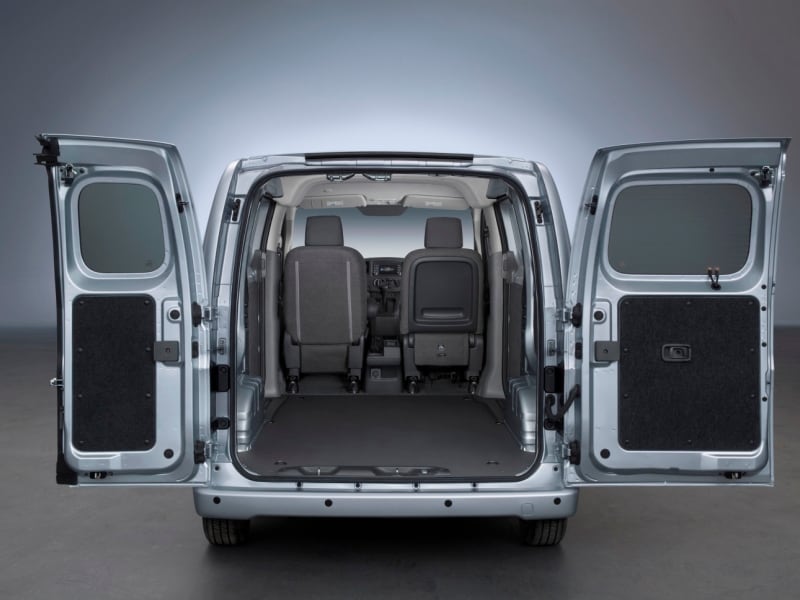
Comfort and Cargo
Utility is what the Chevrolet City Express is all about. Tie-down points abound, as do pre-determined mounting points for racks and shelves.
As we mentioned before, the passenger seat is configured to fold flat to provide a worktable for the driver to review and annotate work orders, or even just eat lunch. The tray molded into the seatback is also ideal for accommodating laptop computers. In addition to providing a nice flat area for the driver to use for whatever need may arise, the fold-flat passenger seat can also be used to accommodate longer items such as piping and lumber—fully enclosed within the vehicle.
While we’re discussing the passenger seat, you’ll find a storage tray underneath it for files, small tools you’d like to keep close at hand, or anything you’d like to keep out of sight over the course of a working day.
The cargo compartment measures 82.8 inches in length by 54.8 inches in width, and 53 inches in height. In terms of overall carrying capacity, the 2015 Chevrolet City Express offers 122.7 cubic feet of cargo capacity, and is capable of a maximum payload of 1,500 pounds. Making it all the more useful is a low lift over height of 21.1 inches for loading materials into the rear compartment.
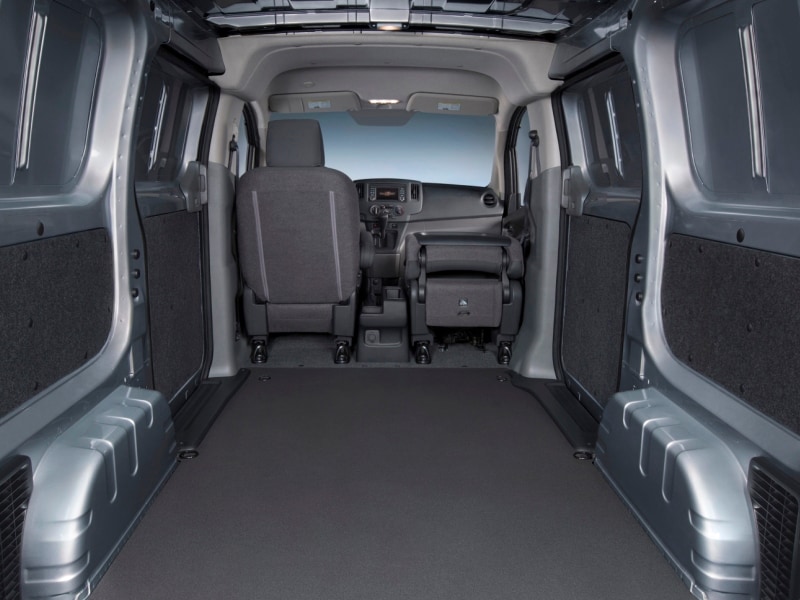
Features and Controls
The passenger area makes entering and exiting easy for the driver and the passenger too. Despite having its primary focus placed upon the accommodation of gear, the people part is nicely taken care of too.
The driver’s seat is adjustable six ways, with lumbar and armrest support provided. The center console incorporates laptop/hanging file folder storage, a pen/pencil tray, a CD holder, and dual cupholders. Recessed storage areas are provided on the upper instrument panel for folders and documents.
Instrumentation is both simple and informative, plus the standard audio system and the climate control system has large knobs, making them easier to operate while wearing gloves.
In other words, as work vehicles go, the City Express is as well thought out as the best of them.
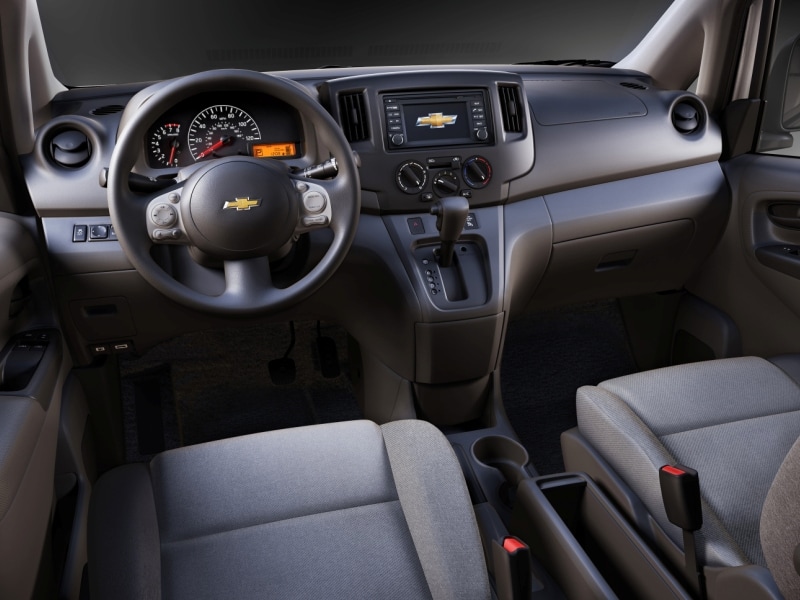
Safety and Crash Test Ratings
Standard safety features include anti-lock brakes at all four wheels. The front wheels get disc brakes, while the rear wheels use drums. The braking system also employs electronic brake force distribution. Traction control, stability control, six airbags (including side curtain and front-seat side impact), and tire pressure monitoring are also included as standard features.
Optional safety features include a rear parking sensor array and a rearview camera.
Also on the peace of mind ledger are a three-year/36,000 mile bumper-to-bumper warranty, five-year/60,000 mile powertrain warranty, and free scheduled maintenance for two years or 24,000 miles. It should be noted some fleet customers get a five-year/100,000 mile powertrain warranty.
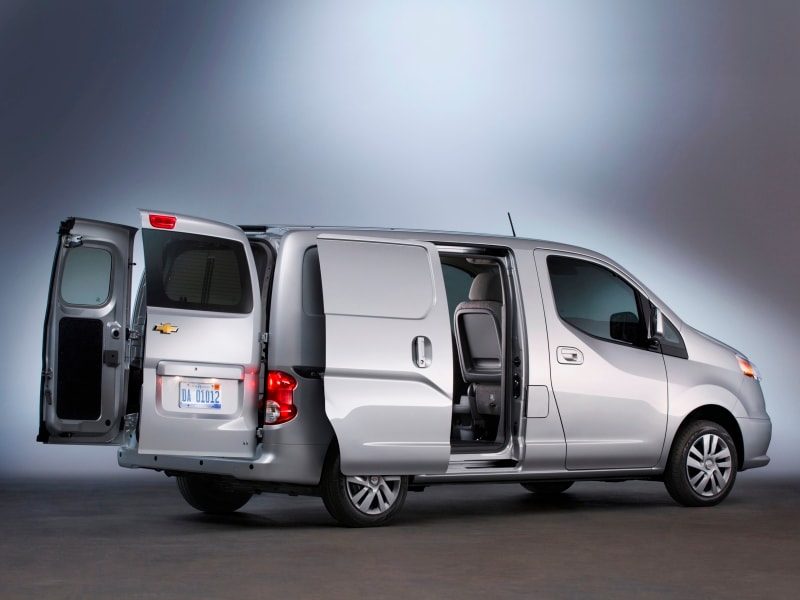
Engines and Fuel Economy
Power comes from a 2.0-liter inline four-cylinder engine with 131 horsepower and 139 ft-lbs of torque. A continuously variable transmission completes the front-wheel drive powertrain. According to the EPA, you can expect to see 24 miles per gallon in the city, 26 on the highway, and 25 miles per gallon in combined city and highway driving.
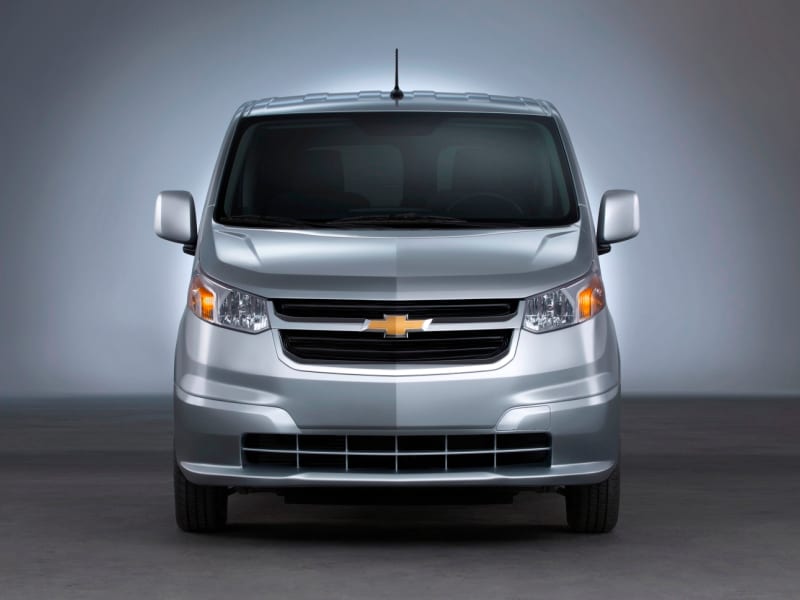
Performance
Kept well within the bounds of its capacities, the City Express is an admirable little workmate. Around town it handles easily, rides smoothly and parks anywhere a compact sedan would fit. With the sliding side doors, you can even get things in and out of the Chevrolet easily if you have to park it between two other vehicles.
With MacPherson struts up front to improve agility, the engineering team went with leaf springs in the rear to help the diminutive van haul equipment without sagging. This affects ride and handling only minimally, while providing needed potential reinforcement. The City Express is agile enough to deal with the obstacle course that is the maze of construction, double parked cars, and other obstructions one encounters in cities.
As you might imagine, though, the overall performance of the Chevrolet City Express is largely dependent upon the service into which it is pressed. With 131 horsepower and 139 ft-lbs of torque, if you go for the maximum payload, you’ll quite logically see diminished performance and fuel economy. On the other hand, the more gear you have loaded into the little van, the quieter it will be—as that cavernous interior we boasted about previously does encourage sound to reverberate.
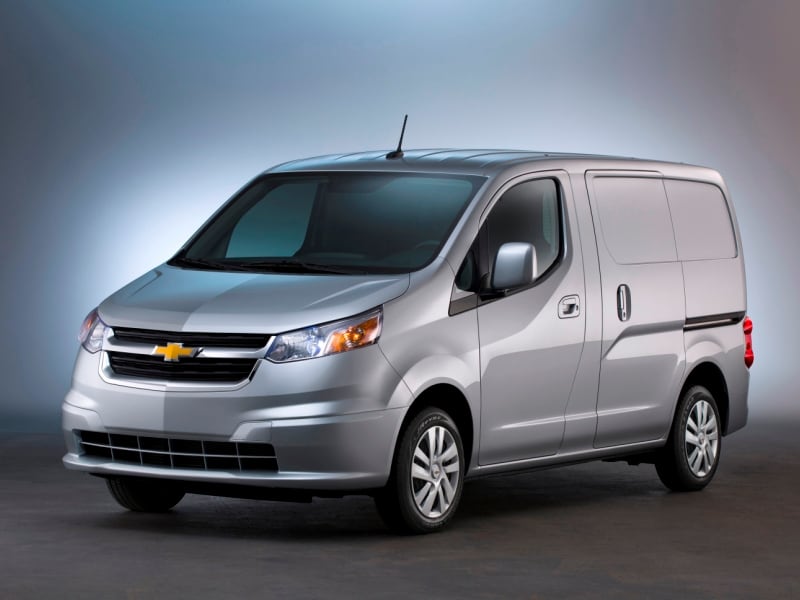
Final Thoughts
While a relatively new category, there is still quite a bit of competition in this area. As we mentioned at the outset, both Ram and Ford have offerings in this segment. And, in a way, the City Express competes with itself in the guise of the Nissan NV200.
Compared to the Ford Transit Connect, the City Express gives up roughly eight cubic feet of cargo capacity and 120 pounds of payload capacity, The Ford also offers a choice of two engines, both considerably more powerful than the Chevy’s, and a lower starting price too—$22,330.
Chrysler’s Ram ProMaster City is up a full nine cubic feet of cargo capacity on the City Express and 383 pounds in payload capability. While the Ram offers but one engine choice, it’s up 57 horsepower and 35 ft-lbs of torque on the Chevrolet. Pricing is a bit higher though, starting at $23,130.
Meanwhile, the Nissan NV200, from which the Chevrolet CityExpress is derived, and with which it shares all of its attributes and features, starts at $20,720—a full $2,230 less.
In other words, while the 2015 City Express looks pretty good on paper all on its own, when you consider the qualities of the competition too, you’ll see there’s some more thinking to do.
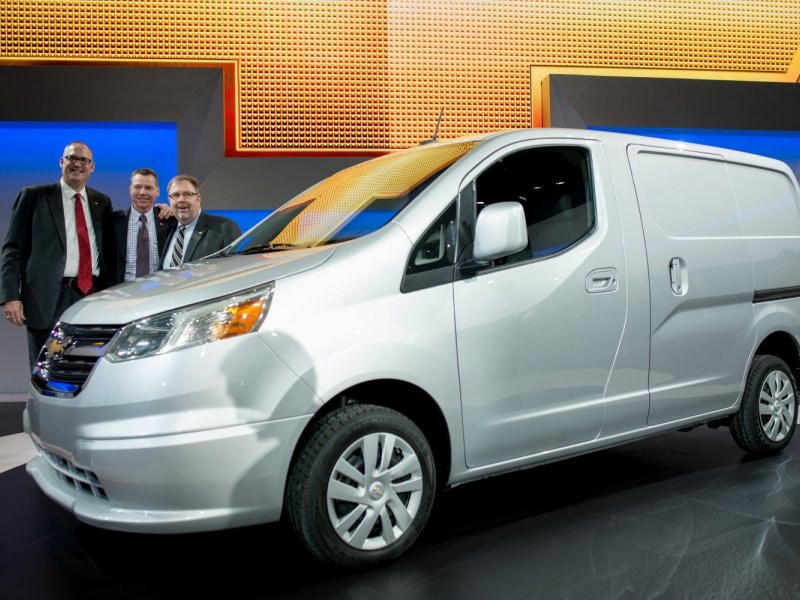
Pros and Cons
Tidy size, admirable fuel economy, easily configured for pretty much any kind of business, reasonably priced, highly maneuverable in city traffic, easy to park, and ideal for small businesses.
Outclassed by the competition, engine could use more power when the City Express is loaded with cargo; Nissan version is considerably cheaper.
